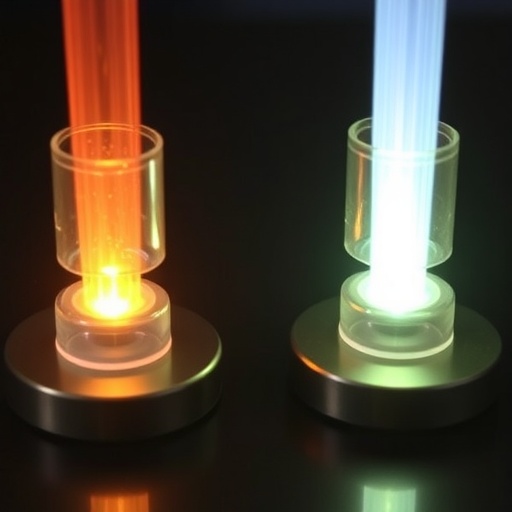Researchers in the field of energy storage have made significant advancements in the development of lithium/sodium iron-based silicate cathodes, which could revolutionize battery technology. The innovative synthesis method documented by Gao and Li demonstrates a novel approach combining vibratory ball milling with solid-phase techniques. This method presents a streamlined pathway for creating highly efficient and effective cathodes, addressing the ever-increasing demand for sustainable energy solutions.
Traditional cathode materials have often faced criticism for their environmental impact and efficiency limitations. Consequently, the exploration of iron-based silicates as viable alternatives has gained momentum. Iron, being abundant and relatively non-toxic, presents a greener choice for battery production. The transition to using lithium or sodium iron-based silicates not only promotes environmental sustainability but also enhances the electrochemical performance of batteries.
The synthesis process outlined in the study by Gao and Li employs a vibratory ball milling-assisted solid-phase method. This means that the materials are mechanically activated, leading to a more homogeneous mixture and improved particle interaction during the synthesis phase. By leveraging mechanical energy, the researchers were able to achieve a more effective reaction pathway than traditional methods. The implications of this advancement on battery performance and life cycle sustainability cannot be overstated.
One of the standout features of this new synthesis technique is its simplicity and efficiency. Traditional approaches often involve complex multi-step processes that can be time-consuming and resource-intensive. In contrast, the method proposed by the authors simplifies the preparation of cathode materials without compromising quality or performance. As researchers continue to explore ways to make battery technology more efficient and environmentally friendly, this study sets a benchmark for future work.
Furthermore, the study provides a detailed analysis of the electrochemical properties of the synthesized lithium/sodium iron-based silicate cathodes. The performance metrics associated with these materials indicate promising charge-discharge cycles, highlighting the advantages of using silicate matrices in cathode development. Enhanced cycle stability ensures that these batteries can withstand prolonged usage without significant degradation, a critical factor in the consumer electronics and electric vehicle markets.
In addition to cycle stability, the researchers have reported notable improvements in energy density and rate capability. The latter refers to the battery’s ability to deliver power quickly, a characteristic essential for applications requiring rapid energy release. By optimizing the composition and structure of the silicate cathodes, Gao and Li have shown that it is possible to achieve both high energy density and fast charging capabilities, thereby catering to a broader range of applications.
Moreover, the use of sodium in conjunction with lithium in these cathodes opens new avenues for research and development. Sodium ion batteries are gaining attention as potential alternatives to traditional lithium-ion batteries, especially given the geological abundance of sodium compared to lithium. This dual approach not only alleviates the pressure on lithium supplies but also offers flexibility in designing batteries tailored to specific needs and applications.
The implications of this research extend beyond merely improving battery performance. The environmental sustainability aspect is crucial as the push for greener energy solutions intensifies globally. The method utilized by Gao and Li reduces the reliance on critical materials that often come with substantial ecological footprints. By focusing on iron-based silicates, this work aligns with ongoing efforts to create sustainable and responsible sourcing of materials for battery production.
As consumer electronics continue to evolve, the need for renewable energy solutions becomes dire. The results of this study not only provide insight into effective cathode materials but also align with the broader goals of reducing dependence on finite resources and minimizing environmental impact. Technological advancements in energy storage are paramount as the world shifts toward electric mobility and renewable energy technologies.
Importantly, this research serves as a stepping stone for further exploration in the development of advanced battery technologies. Future studies may delve into optimizing the performance of these cathodes in real-world applications and understanding their long-term reliability. By establishing a clear connection between material synthesis and performance metrics, Gao and Li have illuminated paths for future innovations in energy storage.
Overall, the study presents a compelling case for the adoption of lithium/sodium iron-based silicate cathodes in the race towards more efficient and sustainable battery technologies. Through simplicity of synthesis and significant performance enhancements, this work contributes to the critical dialogue on how we can collectively transition to greener energy solutions. As researchers continue to build upon these findings, the potential for these materials to change the landscape of energy storage is immense.
In summary, the endeavor to improve cathode materials in battery technology is vital for both ecological sustainability and technological advancement. The synthesis method proposed by Gao and Li represents a significant leap toward achieving these goals. With ongoing research and development, the future of energy storage could indeed become cleaner, more efficient, and more accessible to a global audience.
Subject of Research: Lithium/Sodium Iron-Based Silicate Cathode Synthesis
Article Title: Synthesis and performance of lithium/sodium iron-based silicate cathode prepared by a facile vibratory ball milling-assisted solid-phase method.
Article References: Gao, K., Li, SD. Synthesis and performance of lithium/sodium iron-based silicate cathode prepared by a facile vibratory ball milling-assisted solid-phase method. Ionics (2025). https://doi.org/10.1007/s11581-025-06708-0
Image Credits: AI Generated
DOI: https://doi.org/10.1007/s11581-025-06708-0
Keywords: Lithium, Sodium, Iron-based Silicate, Cathodes, Energy Storage, Battery Technology, Sustainable Materials, Electrochemical Performance.




